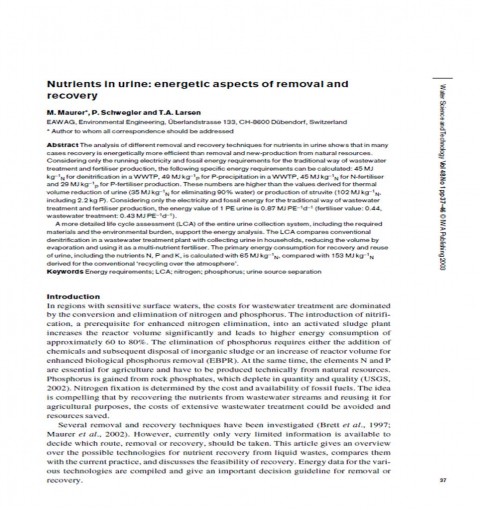Nutrients in urine: energetic aspects of removal and recovery Maurer, M., Schwegler, P., Larsen, T. A. (2003)
Bibliographic information
Maurer, M., Schwegler, P., Larsen, T. A. (2003). Nutrients in urine: energetic aspects of removal and recovery Water Science and Technology, Vol 48, No 1, pp 37–46
Filter / Tags
Renewable energies and climate change (WG3)UrineEnglish
Downloads
Nutrients in urine: energetic aspects of removal and recovery
Type: application/pdf
Size: 0.04 MB

